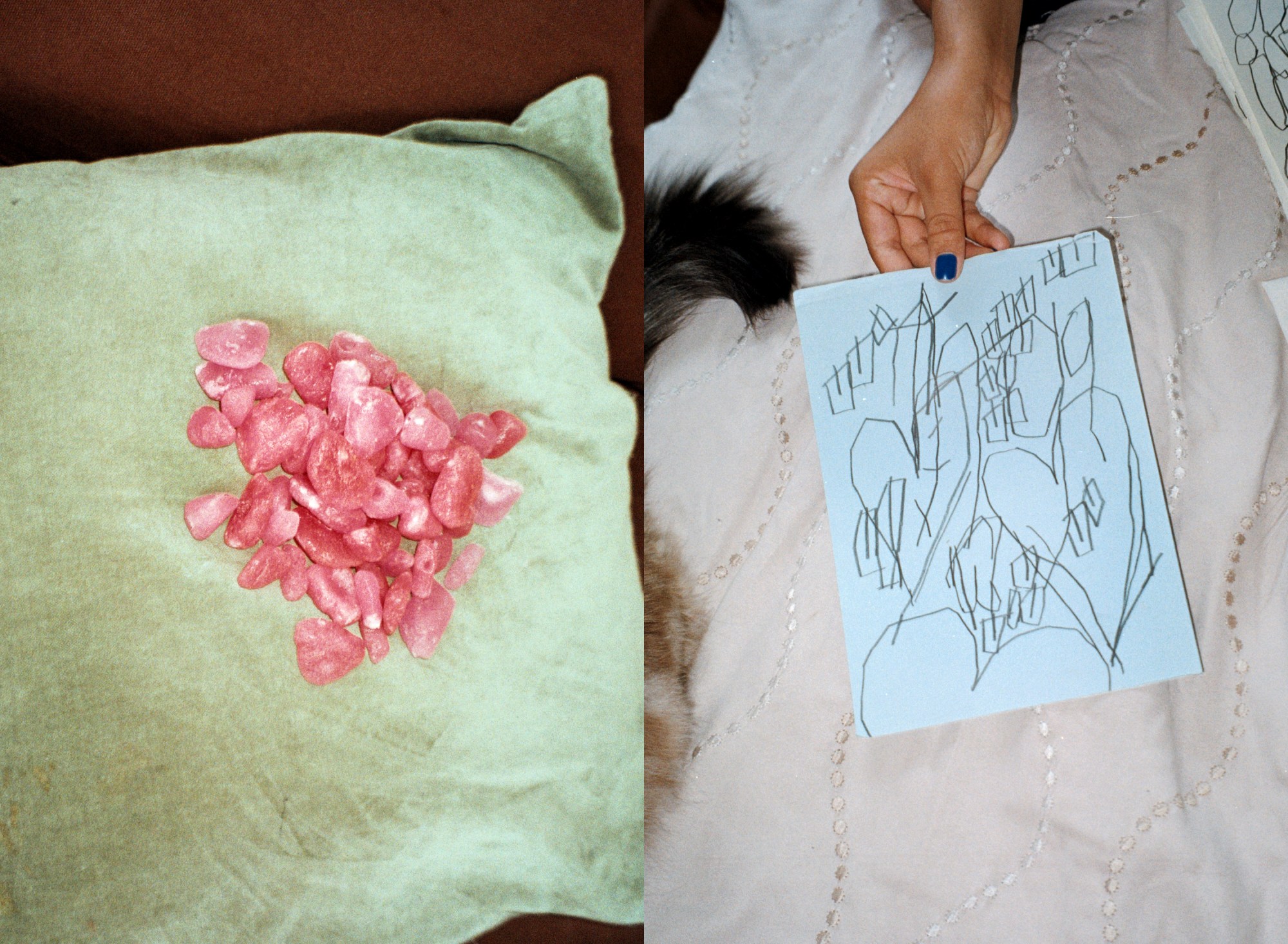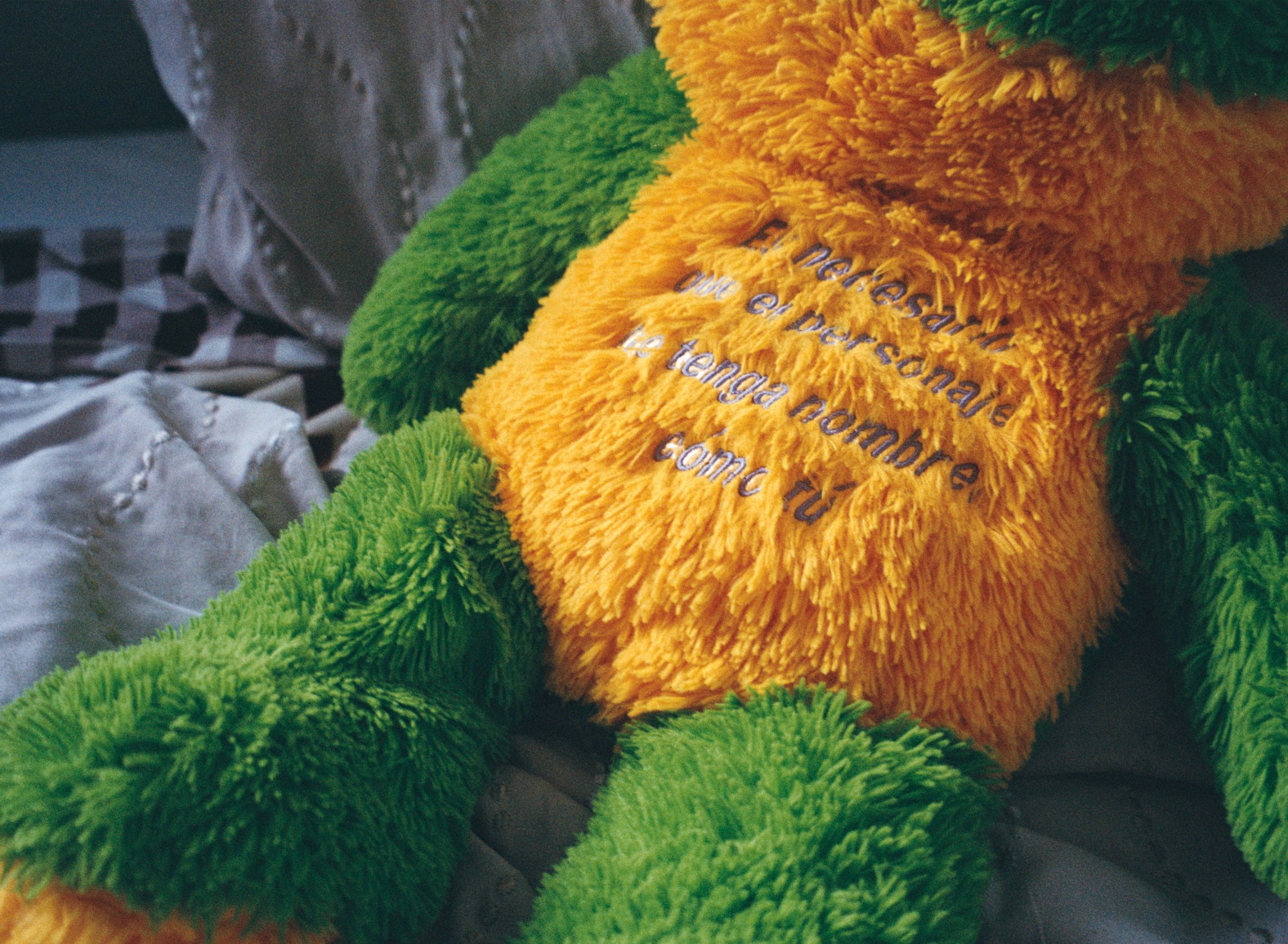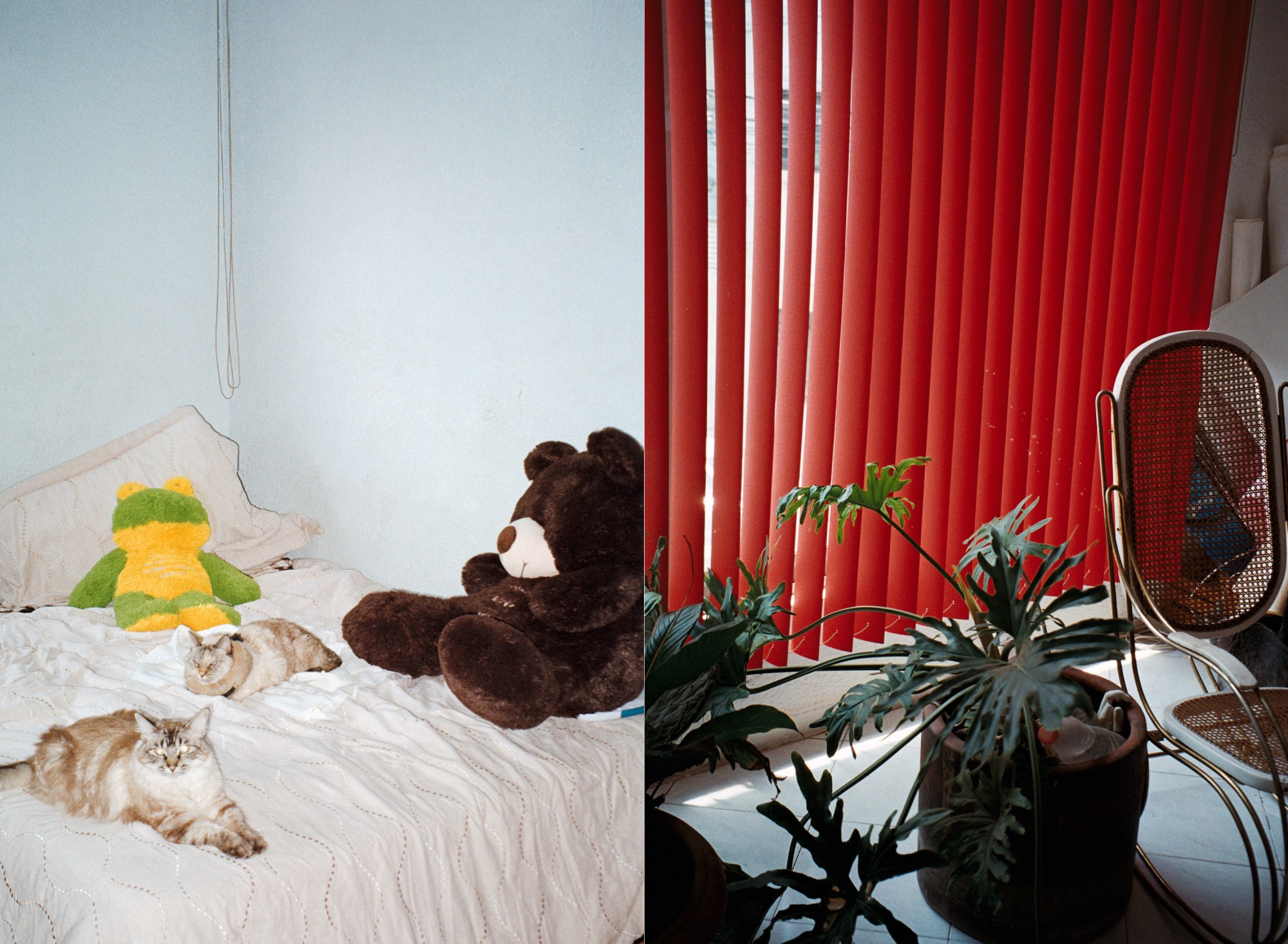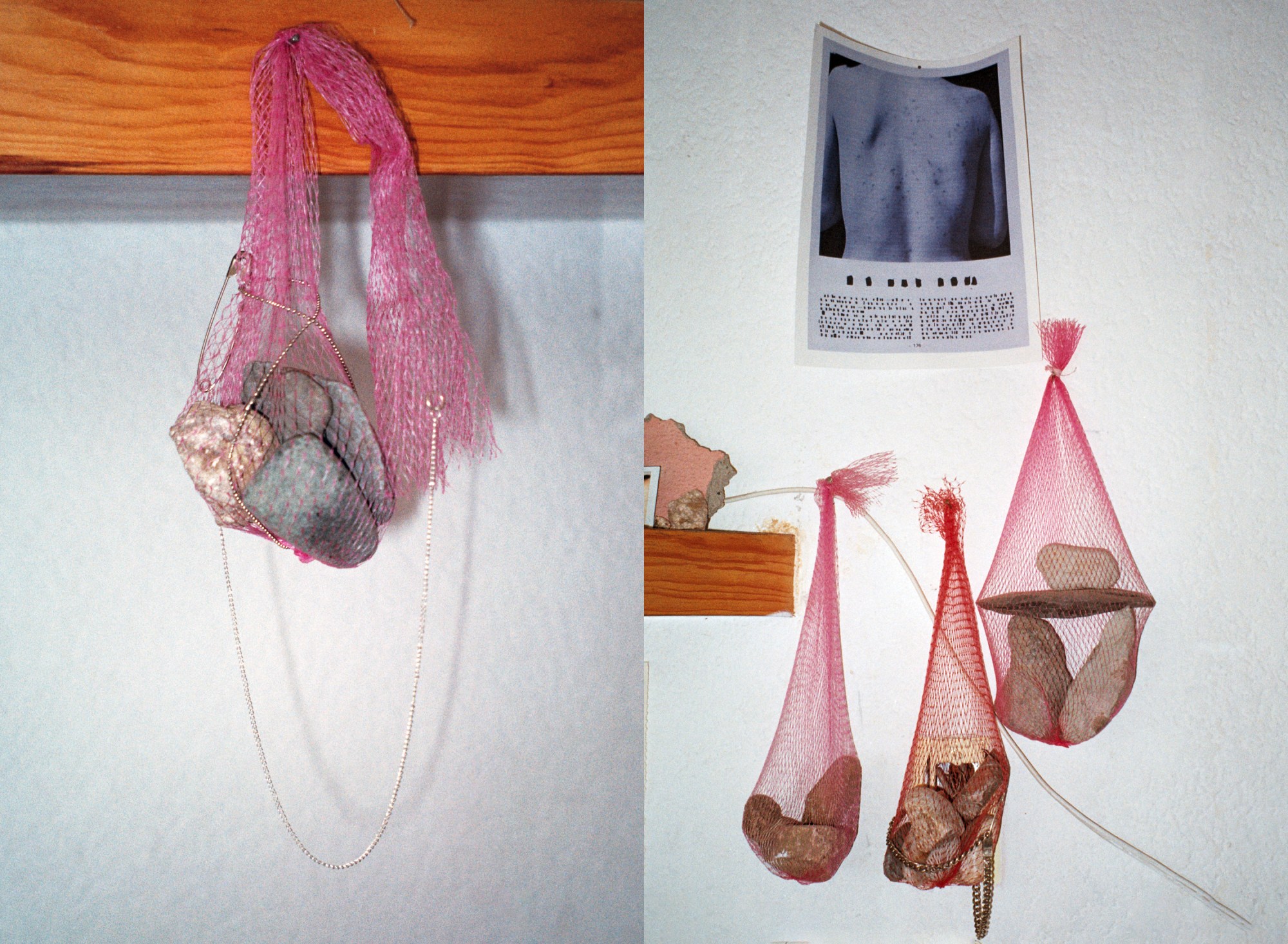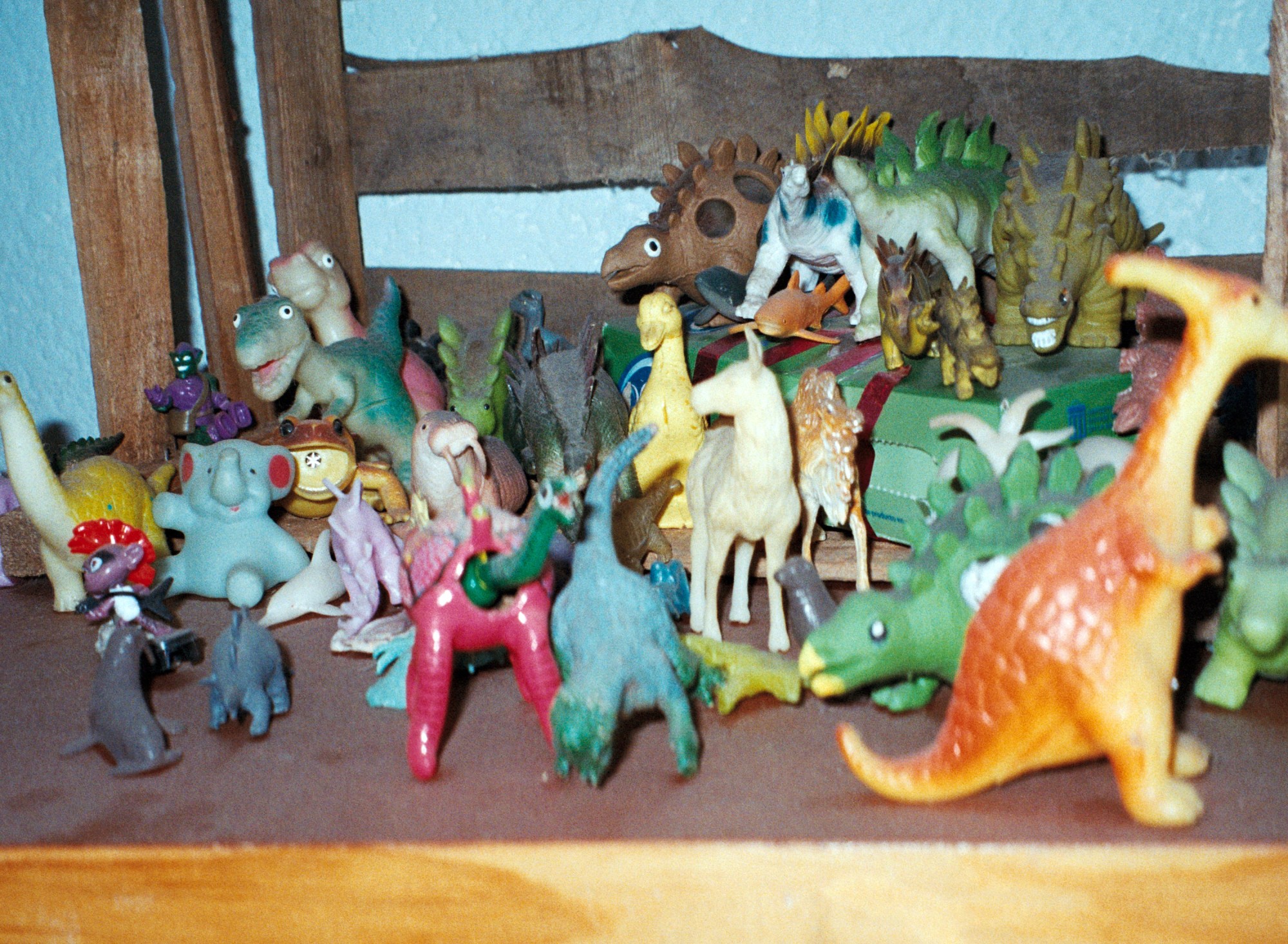Where I live is a new series of profiles of creative people in their personal space. It documents the relationship between chaos and order that characterises our living spaces, especially since the beginning of the pandemic when so many of us have found ourselves living and working at home for extended periods.
Camila GB is an artist living, producing and studying in Mexico City. The 23 year old creative has been living in the Narvarte neighbourhood with a roommate for a while now, and her apartment functions as a studio for her oil paintings, objects and jewellery brand as well as a storage for her beloved collection of rocks and plastic dinosaur figurines.
Her brand Grosera is a collection of organic jewellery with symbolic shapes that overlap her artwork: medium and big scale paintings in muted colours, embroidered plush toys, and resin teddy bears that look like they are disintegrating.
Surrounded by cats and with a dim natural light coming in, Camila takes precious time showing i-D her space, her favourite romantic pieces from her closet and the way she decides what to save and what to throw away.
How are you today?
This is not an easy question to answer… I’m a very sensitive person whose baseline state it’s not always close to being well. But nonetheless, I’m happy.
How come you ended up living in this apartment?
I came to this apartment after a failed attempt to fund a residency for art students in high school. I’ve been living with Alberto, my roomie, for more than a year. We met during a Butoh dance session five years ago and ever since our relationship has gone through a lot of milestones, one of them moving in together.

When do you feel the need to change the space you live in?
I can be either quite obsessive or deeply indifferent regarding the arrangement of things.
Every two months I get crazy moving everything around; it’s a process that involves undoing all the apparent order and even destroying objects, before finding a place for everything again.
Do you have a part of your room you don’t want people to see?
I’m afraid I’m quite transparent, but there’s a chance I’m not aware of the boundaries I set.
What was your room like in high school?
I used to live in a house that was recently demolished, with a red living room and a blue bedroom. In my room I had a corner dedicated to a very stormy relationship, filled with drawings, photographs and relics. After a break up, the energy was so strong that I had to temporarily move to the laundry room on the roof.

How would you describe your life in Mexico City right now?
I wish I could describe it as erratic, but I would be lying — even confusion is periodic.
What’s the main theme of your work nowadays?
I explore specific imaginaries of intimacy and the feminine that are continually reproduced, I approach these places that are interesting as they are common; I would say that it is this common and vulgar character that makes them important to me.
I also put a lot of weight in the exploration of materials in my work. I create from anxiety, and lately I’ve been finding resonance in other creative people doing the same, –that reinforces my belief that it is a generational constant.
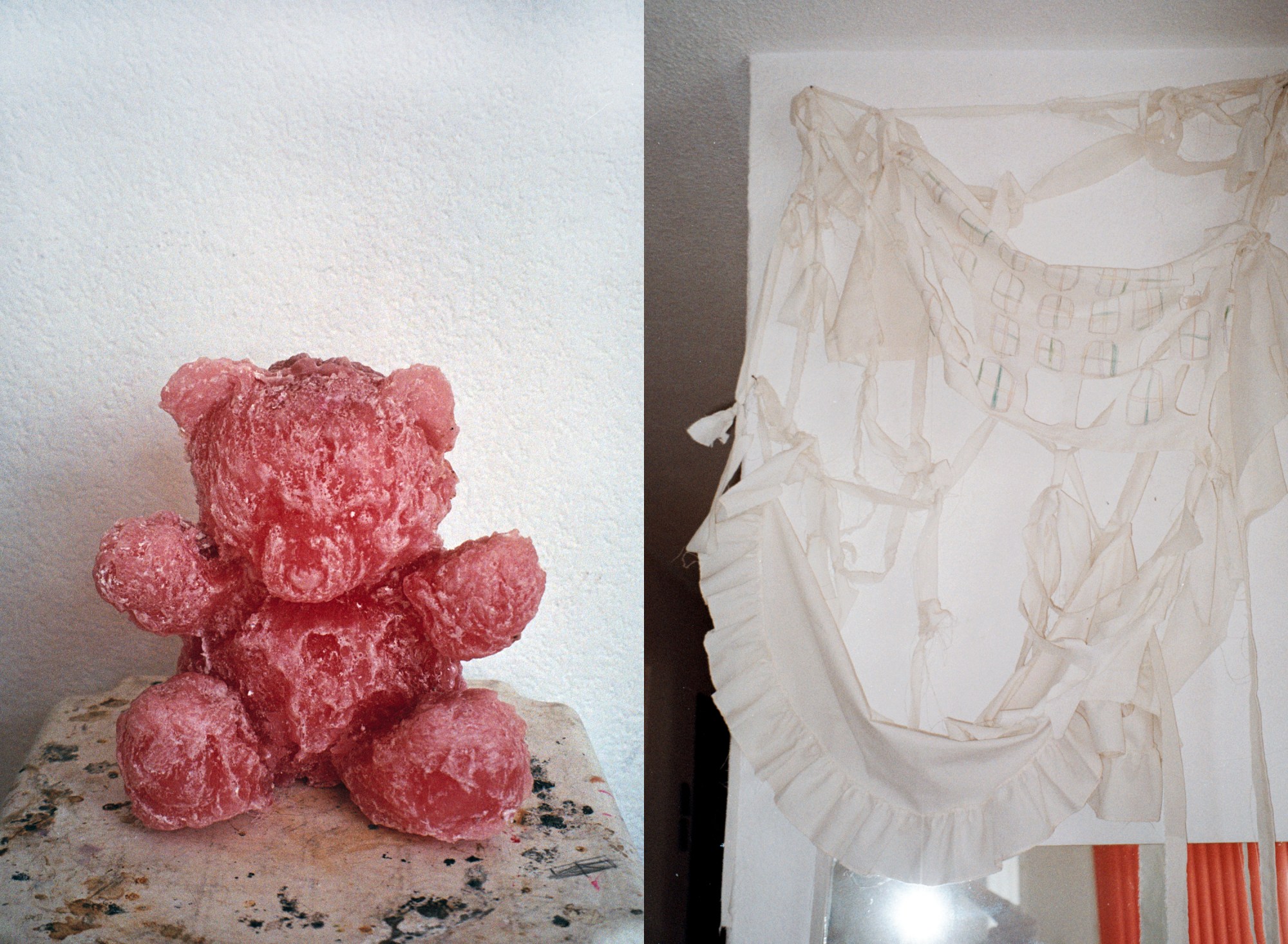
How do you know when to shift from one creative project to another?
I take some space by distributing my energy between my art, my research around writing, my attempt to legitimise my practice (I study philosophy) and my jewellery brand Grosera. After painting for weeks I’m left irritated, so I move to jewellery or studying.
Why do you collect stones? How did you pick them?
The fact that the stones are presumably amorphous and irregular as a formal characteristic is exciting to me and gives me pleasure. There is a very close relationship between the things I find and my anxiety, so I take them home with the intention of exploring them.
Do you have a daily routine?
I should, but I’m failing at doing it. I only drink coffee whenever I can.
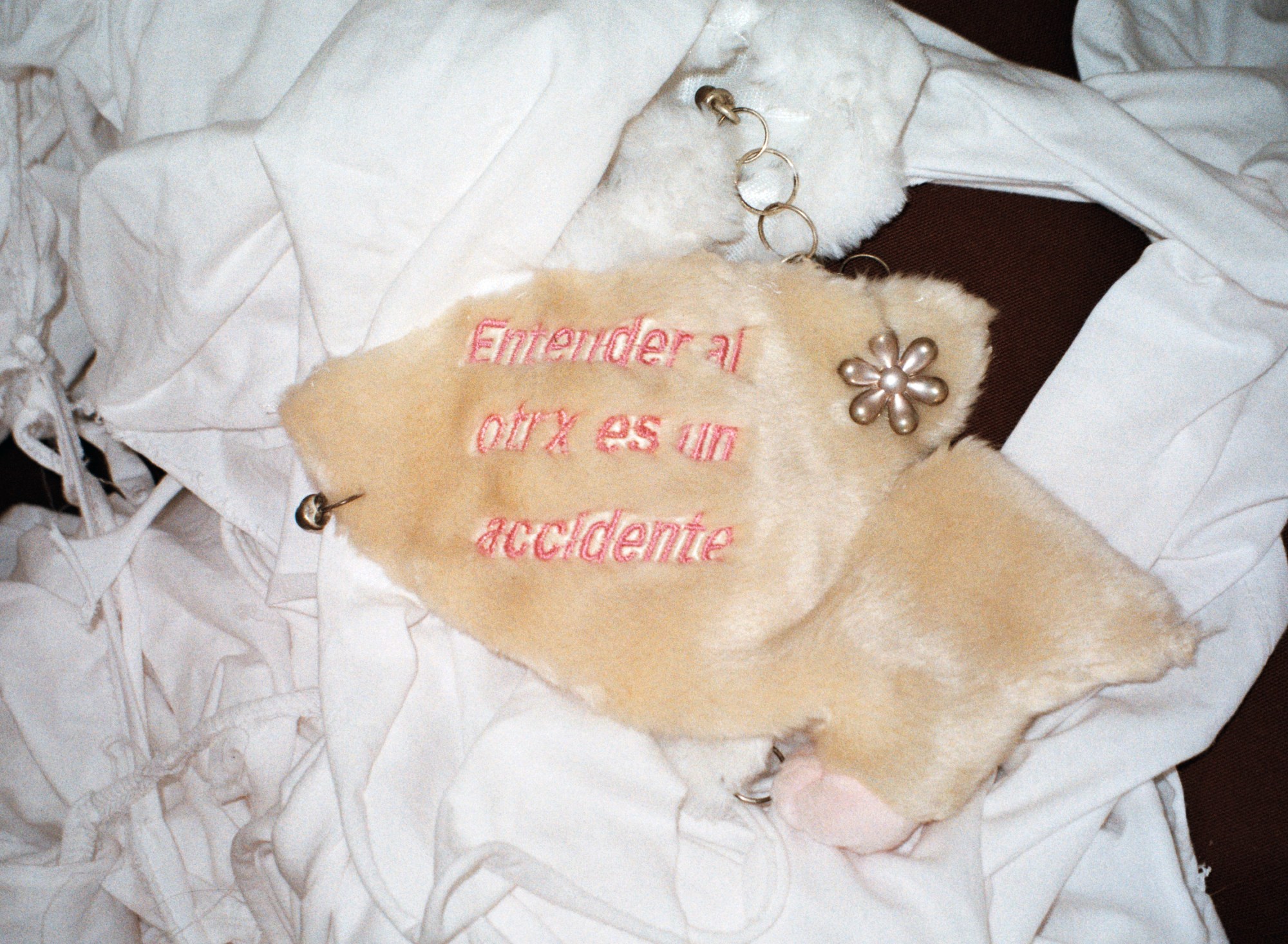
What’s the hardest part of being a creative person right now?
I’m missing cathartic experiences in groups. Places where I can let go of energy in an intense way and by touching other bodies — I miss Butoh dancing with other people. It is difficult to “produce” when the emergency disrupts the structure from which you value your work, but without pushing you to a crisis state (an actual fertile state). You are just stuck in the middle.
If you were to move to another country, where would you like to go?
I can’t imagine living in a different city, unless it is to develop a specific project that requires me to go. Hopefully somewhere humid and sunny.
What excites you more about the future?
Rethinking the harmful nature behind much of what we consider “normal.” I’m excited to see where my stubbornness takes me.
